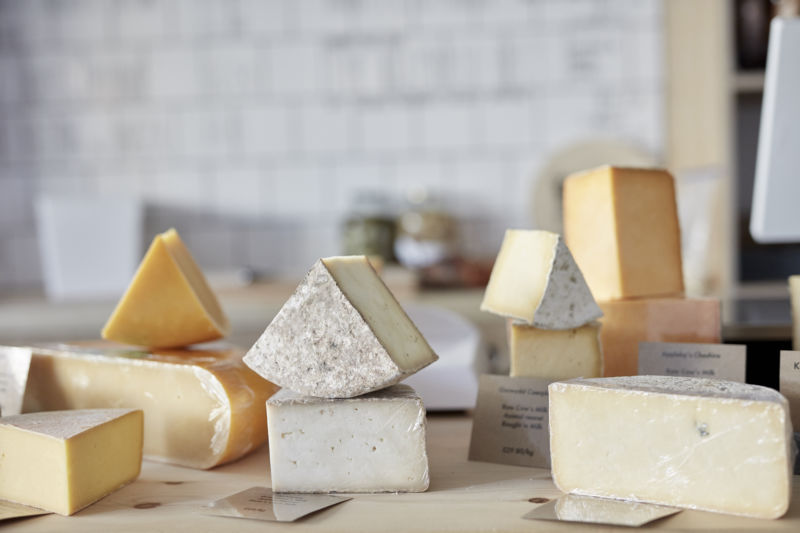Supermarkets have long used security measures to protect high-value products, including fresh meat, toiletries, such as razor blades, and alcohol. However, as winter approaches, a perfect storm of continued food and household energy price inflation seems to be directing Europe on the path to recession[1] with consumers’ household budgets increasingly squeezed.
Aside from unprecedented increases in the cost of electricity and gas, food and drink is also in the firing line. Prices across most food categories have risen steadily since last year on the back of mounting global commodity prices and other cost pressures.
So far there is no sign that food prices will fall anytime soon. In the US, the prices of food and non-alcoholic drinks bought for at-home consumption increased by 13.5% in the year to August 2022, according to data from the Bureau of Labor Statistics[2]. And in the UK, rises include around 50% for some pastas, more than 15% for bread and minced beef, around 8% for vegetable oil and 10% for breakfast cereal[3]…all kitchen cupboard staples that families rely on week-to-week.
This means retailers are being forced to rethink their security measures amidst fears that the rising prices could force more shoppers to take items without paying for them[4] - disrupting the supply chain, availability, and ultimately the bottom line.
Retailers are already reporting an increase in theft of what were once considered basics[5]. To keep those items in stock, they are now looking for security solutions that allow products to remain on-shelf but still offer both physical protection and act as a visual deterrent to thieves.
This is where tried and tested anti-theft solutions give retailers the power to protect a wide range of products. Checkpoint’s RF labels have been developed for a diverse range of product types and come in a variety of sizes, as well as having options which are customizable to suit different types of packaging. Importantly for grocery products, all its speciality food labels are tested for both food safety and microwave safety under ISEGA and TUV certifications, which safeguards both consumers and retailers.
These certifications are important because of the need to mitigate against the impact of metal in microwaves, and the fact certain compounds within common adhesives can migrate through packaging film. This means that all products – including security labels and the adhesive used to apply the – must conform to limits set by Regulation [EC] No 1935/2004. There are two different types of food safe adhesive in Checkpoint’s food safe range; one for indirect contact – where the label is applied to the outside of packaging. The other is for direct contact, when the label is placed inside the packaging and may come into direct contact with the food inside.
Let’s take a closer look at the solutions for the food groups deemed to be most at risk.
Pasta, bread, and cereals are generally considered to be low-risk, but as prices continue to rise, retailers are considering how best to protect these household staples. One of the major benefits of Checkpoint Systems’ food labels is that all our solutions can be applied either at source – when the product is made – or manually in-store. This offers a flexible, effective solution that can be deployed as and when it is needed; for instance, not every store across a supermarket’s estate may need to protect these items.
Meat, including ready meals, which are increasingly vulnerable to theft, must carry food and microwave-safe labels; these use safe, extra-strong adhesive that makes them extremely difficult to remove. Checkpoint Systems makes 300 million food and microwave-safe labels each year, making it the food security expert globally.
Checkpoint’s food-safe label also protects high-fat products such as cheese and full-fat milk because there’s no risk of it being detuned while in use. Vegetable oils can be tagged with standard RF labels that work equally well close to liquids, glass, and plastic packaging. In addition, retailers can choose from a selection of design options for the type of label itself. From plain white, to clear, to labels sporting the distinctive, registered Black Lock logo – in itself a proven theft deterrent[6].
Whatever the protection required, Checkpoint Systems has a proven solution that is easy to implement, either at source or in-store. For more information contact our of the team of RF EAS experts.

References
[1] https://www.reuters.com/markets/europe/europe-heading-recession-cost-living-crisis-deepens-2022-09-05/
[2] https://www.businessinsider.com/inflation-food-prices-cost-eggs-butter-coffee-oil-expensive-list-2022-9?r=US&IR=T#margarine-is-close-behind-costing-383-more-than-it-did-this-time-last-year-4
[3][3] https://www.ons.gov.uk/economy/inflationandpriceindices/articles/trackingthelowestcostgroceryitemsukexperimentalanalysis/april2021toapril2022
[4] https://www.bloomberg.com/opinion/articles/2022-01-05/shoplifting-concerns-rise-alongside-inflation-covid-wall-street-should-worry?leadSource=uverify%20wall
[5] https://www.thegrocer.co.uk/stores/shoplifting-on-the-rise-as-mounting-cost-of-living-bites/667686.article
[6] Internal Checkpoint Study
